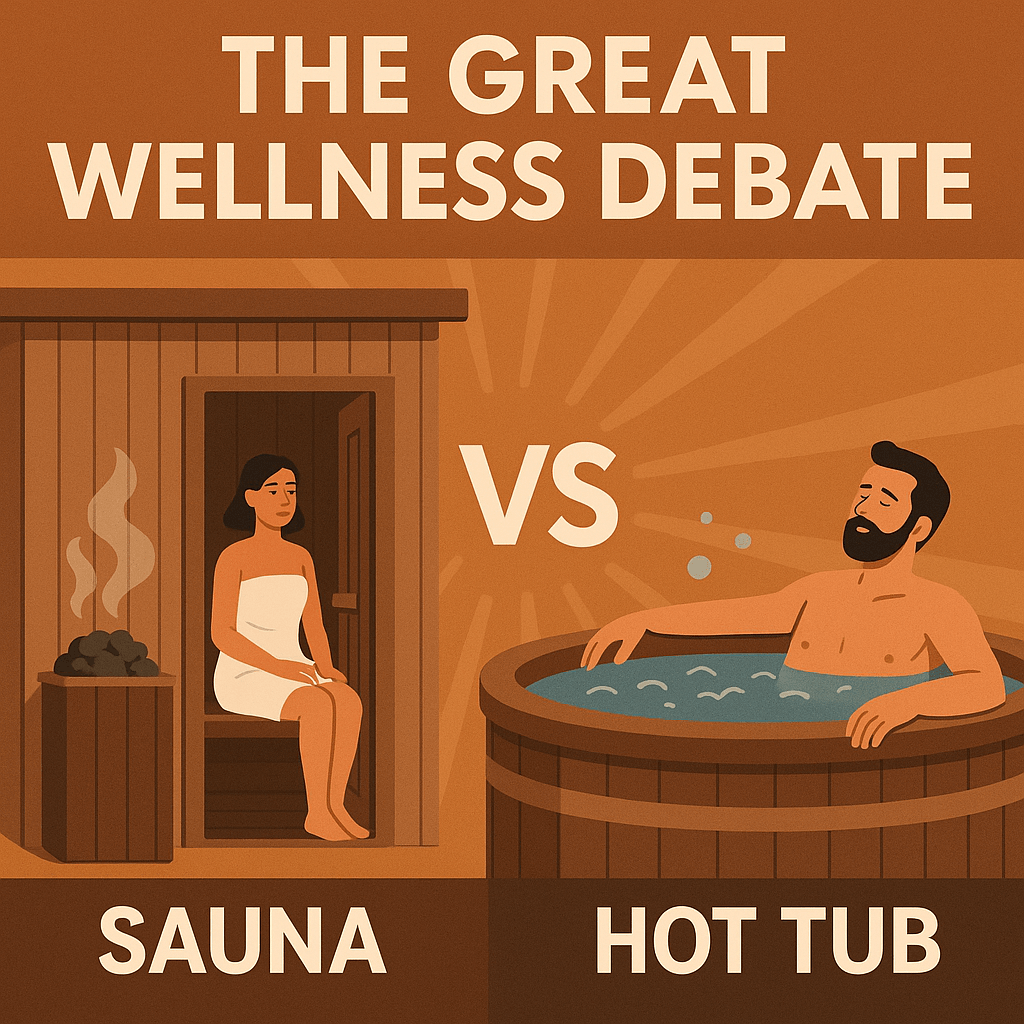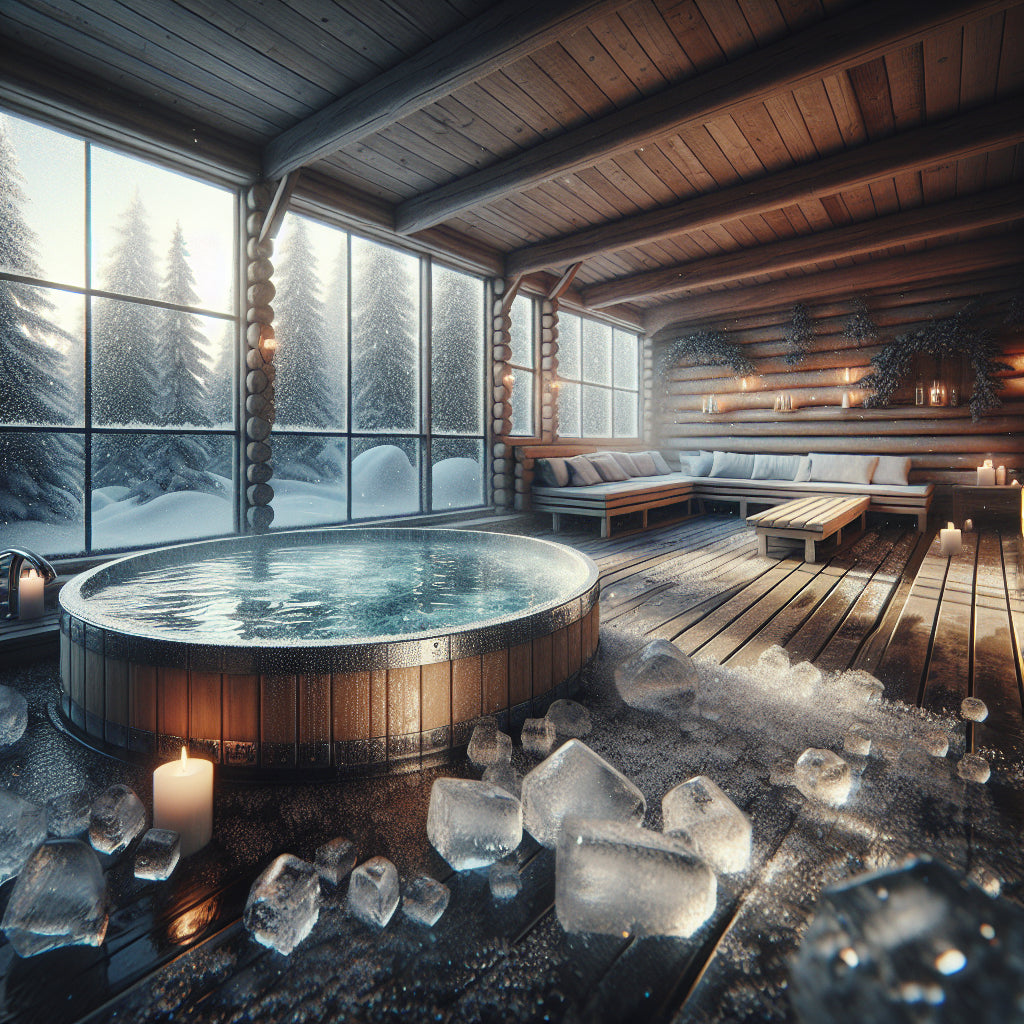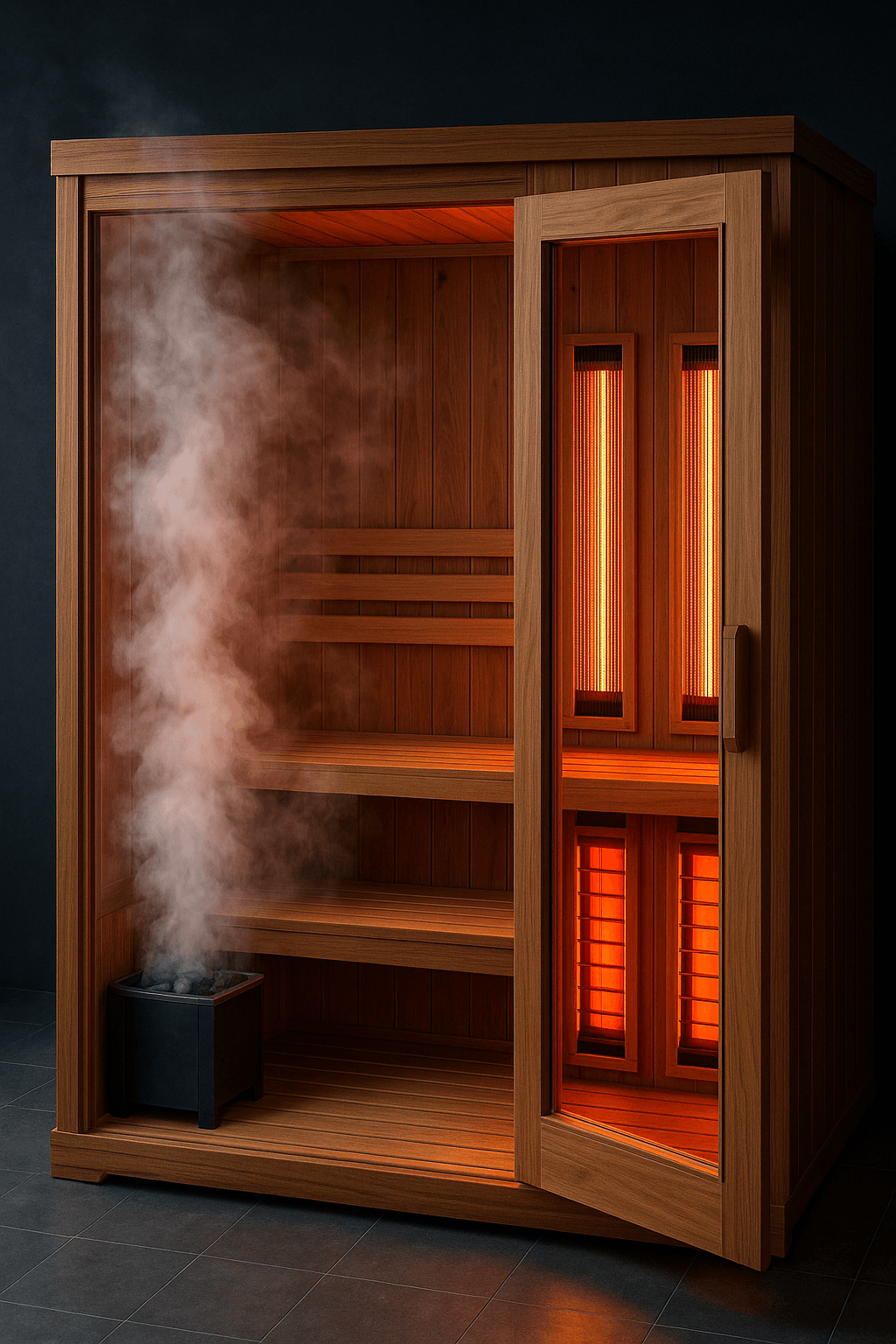Sauna vs Hot Tub: Which One Delivers the Better Results?
The Great Wellness Debate: Sauna vs Hot Tub – Which One Deserves a Place in Your Home Sanctuary?
If you've ever dreamed of creating a personal sanctuary at home, you've probably weighed the benefits of a sauna vs hot tub. Both are symbols of relaxation, health, and high-quality living—but they serve different purposes. For those aged 30–60 who care about longevity, fitness, and recovery, the choice between these two isn’t just about comfort. It’s about results.
In this article, we break down everything you need to know: from muscle recovery and cardiovascular benefits to maintenance, cost, and long-term value. Whether you're team steam or team soak, this guide will help you make the right investment for your body, mind, and lifestyle.

What Is a Sauna and How Does It Work?
A sauna uses dry or infrared heat to warm your body, increase core temperature, and stimulate sweat. There are two primary types:
- Traditional Saunas: These heat the air using an electric or wood-burning stove and reach temperatures up to 195°F. You’ll often see rocks placed on top of the heater that you can pour water on for a burst of humidity—creating a "wet sauna" effect.
- Infrared Saunas: Instead of heating the air, these use infrared light to penetrate the skin and heat the body directly. They're more energy-efficient and operate at lower temperatures (typically 120–150°F) while still delivering deep heat therapy.
Health Benefits of Saunas
- Detoxification: Sweating is one of the body's natural ways of expelling toxins like heavy metals and environmental pollutants.
- Improved Circulation: Heat exposure causes blood vessels to dilate, improving oxygenation and nutrient delivery to muscles and organs.
- Muscle Recovery: Post-exercise sauna use helps reduce delayed onset muscle soreness (DOMS), improve mobility, and lower inflammation.
- Stress Reduction: The combination of heat and solitude can trigger the release of endorphins, reduce cortisol, and enhance mood.
- Immune Support: Regular sauna use has been shown to mimic the benefits of a mild fever, potentially enhancing immune function.
Scientific Support
- A 20-year Finnish study published in JAMA Internal Medicine found that men who used saunas 4–7 times a week had a 50% lower risk of cardiovascular-related death compared to those who used saunas once weekly.
- Research in Complementary Therapies in Medicine demonstrated reduced pain and improved quality of life in fibromyalgia patients using infrared saunas over a 12-week period.
What Is a Hot Tub and How Does It Work?
A hot tub, or spa, is a large tub filled with heated water (usually 100–104°F) and equipped with powerful jets that provide massage through water pressure. It combines buoyancy, warmth, and hydrotherapy to deliver full-body relaxation.
Unlike saunas, hot tubs involve immersion, which provides a weightless feeling that eases stress on joints and muscles.
Health Benefits of Hot Tubs
- Joint Pain Relief: Warm water reduces joint stiffness and eases conditions like arthritis and bursitis.
- Muscle Relaxation: Strategically placed jets massage key muscle groups—ideal for back, shoulders, and calves.
- Sleep Support: Soaking before bedtime helps lower body temperature post-immersion, signaling the body to fall asleep faster and stay asleep longer.
- Circulation and Heart Health: Studies show that warm water immersion lowers blood pressure and can improve vascular function.
Scientific Support
- A study published in the Journal of Physiological Anthropology found that immersion in warm water promotes parasympathetic nervous system activity, reducing stress and anxiety.
- A 2020 study in the Journal of Clinical Rheumatology reported that consistent hydrotherapy sessions reduced lower back pain and improved functional movement.
Sauna vs Hot Tub: A Head-to-Head Comparison
| Feature | Sauna | Hot Tub |
|---|---|---|
| Heat Type | Dry (Traditional) or Infrared | Heated water (Hydrotherapy) |
| Temperature Range | 120–195°F | 100–104°F |
| Best For | Detox, circulation, longevity, post-workout recovery | Joint pain, sleep, relaxation, massage therapy |
| Maintenance | Low (especially infrared models) | Medium to high (filters, water balance, cleaning) |
| Energy Use | Lower (infrared), higher (traditional) | High due to heating water consistently |
| Installation | Easier indoors (infrared/plug-in) | Requires water source, drainage, and safety access |
| Noise Level | Silent or minimal | Moderate (jet sounds can be soothing or distracting) |
| EMF Considerations | Relevant for infrared models | Not applicable |
Choosing Based on Your Wellness Goals
If You Want: Detox and Longevity
Go for a sauna, especially infrared or full-spectrum models. These penetrate deep into tissues to stimulate sweat glands, enhance mitochondrial health, and lower chronic inflammation markers. This makes saunas particularly beneficial for people managing autoimmune issues, chronic fatigue, or environmental toxin exposure.
If You Want: Pain Relief and Better Sleep
Choose a hot tub. Its heated immersion combined with hydro-massage reduces muscle tension and eases nerve discomfort. The buoyancy helps remove strain from joints, while the warmth triggers a calming effect that supports sleep hygiene.
Consider Your Living Space
- Indoor Use? An infrared sauna is often the most practical. Many models are plug-and-play and don’t require ventilation or water hookups.
- Outdoor Space? A traditional sauna or hot tub can elevate your backyard into a spa-like retreat. Make sure you have weather-resistant covers and a reliable electrical/water supply.
👉 Shop Outdoor Sauna
EMF Considerations in Saunas
If you plan to use your sauna daily, low EMF output is important. Some infrared units emit electromagnetic fields (EMFs) that may be a concern for those sensitive to environmental toxins or with compromised immune systems. Opt for units advertised as “near-zero EMF” to minimize exposure.
👉 Browse Near-Zero EMF Options
Costs Over Time: What to Expect
Initial Investment
-
Both saunas and hot tubs range from $3,000 to $10,000+ depending on size, materials, and features. High-end cedar or redwood saunas and jetted luxury tubs can exceed this range.
Energy & Water Use
- Hot Tubs require ongoing water heating, filtration, and chemical balancing. The cost of heating water year-round—especially outdoors—can add hundreds annually.
- Infrared Saunas are more energy-efficient, with some models costing just a few cents per session.
Maintenance
- Saunas typically require occasional wipe-downs and periodic heater checks.
- Hot Tubs need weekly chemical testing, monthly filter cleanings, and annual draining.
👉 Compare the Best Home Sauna here.
Lifestyle Considerations: Social, Routine, and Family Use
Social Settings
- Hot tubs are generally more social. You can gather, chat, and enjoy drinks while relaxing with friends.
- Saunas are more introspective—ideal for quiet, solo time or post-workout use.
Time Commitment
- A sauna session can be as quick as 15–20 minutes.
- A hot tub soak may encourage longer lounging (20–40 minutes), especially when paired with a view or entertainment.
Family Use
- Hot tubs can double as fun for kids and teens (always with supervision).
- Saunas are best for adults and older teens familiar with heat safety.
The Hybrid Wellness Routine: Why Choose One?
Believe it or not, many homeowners invest in both. Here’s how they combine:
- Weekday Routine: Use your sauna for a quick detox session after your morning workout or in the evening for stress release.
- Weekend Recharge: Invite friends or unwind with family in the hot tub. Add aromatherapy or underwater lighting for a spa-like experience.
This dual approach gives you the best of both worlds—thermal therapy and hydrotherapy, detox and deep relaxation.
Final Verdict: Sauna or Hot Tub?
There’s no one-size-fits-all answer—but there is a best choice for your goals.
Choose a sauna if:
- You want to support metabolic health, detox, and recovery
- You have limited space indoors
- You’re seeking a low-maintenance wellness tool for daily use
Choose a hot tub if:
- You need relief from chronic pain, arthritis, or back problems
- You prioritize social relaxation or couple/family bonding
- You’re seeking a way to improve sleep quality naturally
Still Can’t Decide?
Browse our hand-picked collections:
Additional Resources
Want to dive deeper into the science behind heat and hydrotherapy? Here are two excellent resources that explore the health benefits of saunas and hot tubs in detail:
-
JAMA Internal Medicine – Sauna bathing is associated with reduced cardiovascular mortality and improves heart function (no-follow link)
This 20-year Finnish study explores how frequent sauna use correlates with a lower risk of heart disease, stroke, and all-cause mortality. -
Journal of Physical Therapy Science – The Effect of Hydrotherapy on Pain, Function, and Quality of Life in Patients With Low Back Pain (no-follow link)
This clinical study examines how regular hot tub and water-based therapy improves physical function and alleviates chronic lower back pain.








Leave a comment
This site is protected by hCaptcha and the hCaptcha Privacy Policy and Terms of Service apply.